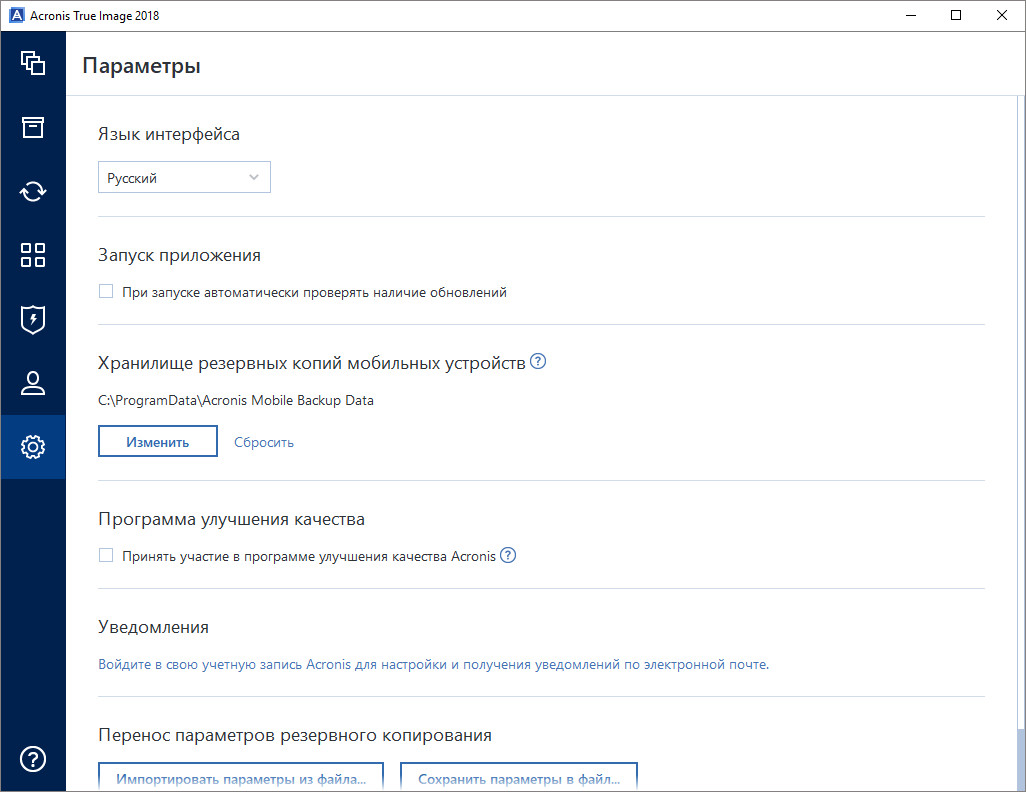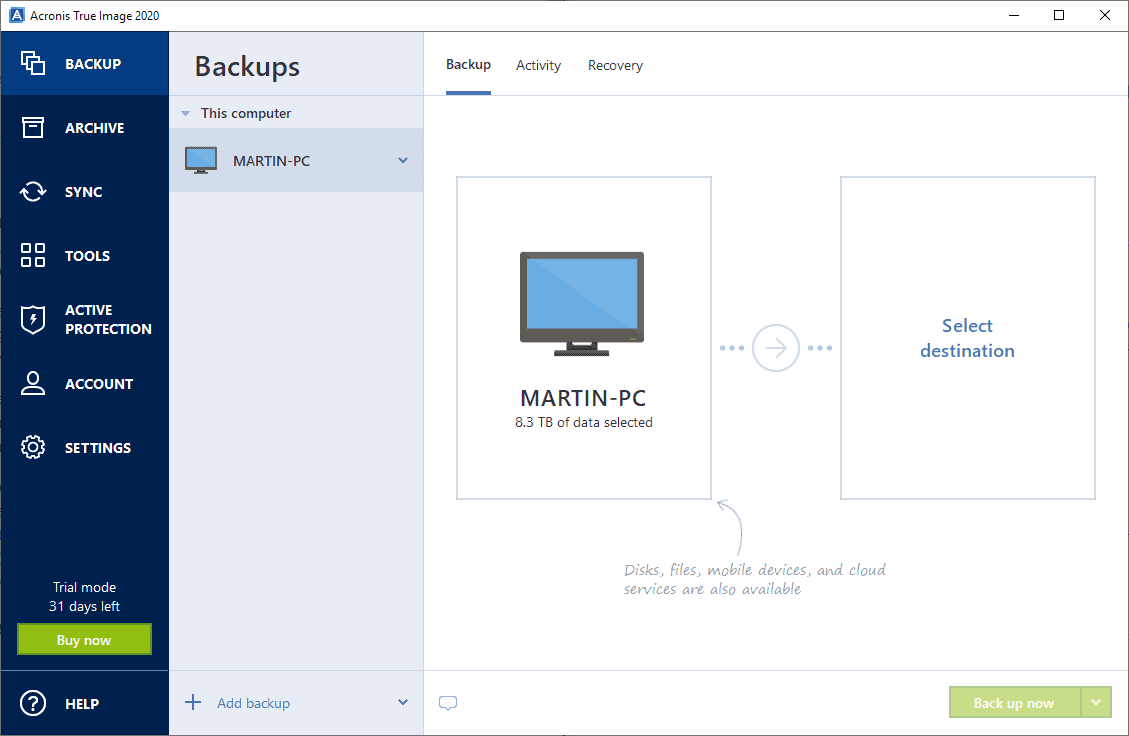
- #ACRONIS TRUE IMAGE 2020 ISO HOW TO#
- #ACRONIS TRUE IMAGE 2020 ISO INSTALL#
- #ACRONIS TRUE IMAGE 2020 ISO DRIVERS#
- #ACRONIS TRUE IMAGE 2020 ISO UPGRADE#
- #ACRONIS TRUE IMAGE 2020 ISO SERIES#
#ACRONIS TRUE IMAGE 2020 ISO SERIES#
Intel(R) 6 Series/C200 Series Chipset Family SATA AHCI/RAID Controller.Intel(R) 7 Series/C210 Series Chipset Family SATA AHCI/RAID Controller.Version 12.9, requires an earlier version of Windows ADK. Intel(R) C600 Series Chipset SATA AHCI Controller.Intel(R) 7 Series/C216 Series Chipset Family SATA AHCI/RAID Controller.Intel(R) 8 Series/C220 Series Chipset Family SATA AHCI/RAID Controller.Intel(R) 9 Series Chipset Family SATA AHCI/RAID Controller.

#ACRONIS TRUE IMAGE 2020 ISO DRIVERS#
Note that the above command should be run on the computer where the bootable media is intended to be used, not where the media builder is running (if these are different computers).įind the latest version of Intel RST drivers at Wmic path win32_pnpentity where "caption like '%Chipset%' OR caption like '%AHCI%' OR caption like '%RAID%' OR caption like '%SATA%'" get caption If you are unsure about what model of Intel controller is used, launch Windows Start menu, type cmd, right-click the found result and select "Run as administrator" or "More"-"Run as administrator", then execute the following command:
#ACRONIS TRUE IMAGE 2020 ISO HOW TO#
One of the most popular drivers that are needed for a successful internal drive recognition, and that are missing in the default clean WinPE media, are Intel RST drivers.Ĭlick here to expand information on how to find the right Intel RST driversĭownload and unzip the latest version of Intel RST drivers that support the hardware where the bootable media will be used. In such case you need to figure out the model of the controller that is used to access the disk and find the drivers for it in zip/rar/7z format. Sometimes computer manufacturers do not provide the drivers in extractable format, or the PC's hardware could have been customized afterwards. If you do not need network support, skip "Ethernet", "Network" and "Wi-Fi". You need drivers, that are listed under "Storage", "Chipset", "Disks", "SATA", "AHCI", "RAID", "NVMe", "PCIe", "M.2", "U.2", "USB", "Network", "Ethernet", "Wi-Fi" sections.
#ACRONIS TRUE IMAGE 2020 ISO INSTALL#
msi file, try launching this file, see if it offers an option to extract rather than install drivers.ĭownload and unzip drivers from the computer manufacturer's website. The drivers must be extracted in a folder so that individual files. If some hardware is not detected, re-create the bootable media, this time not skipping this step and adding the drivers. Because finding the right drivers can be time consuming, you can skip this step, finish creating a bootable media, try and boot the computer from it and see if the disks / network / NAS are detected successfully in the Recovery's "Browse" dialog window. For better compatibility with your hardware, you can select drivers to be added to the media.

#ACRONIS TRUE IMAGE 2020 ISO UPGRADE#
In case of significant hardware upgrade scenarios, like a migration from old SATA HDD to a faster m.2 NVMe SSD you may need to add drivers for the new hardware on the next step of the Media Builder. Windows Recovery Environment is recommended, because it usually has all the drivers required for the successful hardware recognition. Select a toolkit that you want to be used for the rescue media creation.The option "32-bit (x86)" under the "Architecture" drop-down list is for very rare cases of tablets and other devices, that run 32-bit UEFI firmware - not to be confused with 32-bit Windows! Choose 64-bit (圆4), regardless of whether your Windows is 64-bit or 32-bit.If you select the option "WinPE-based media":

Using bootable media created with WinPE may provide better compatibility with your computer’s hardware because the preinstallation environment uses Windows drivers. First, select the bootable media type: WinPE-based media or Linux-based media.


 0 kommentar(er)
0 kommentar(er)
